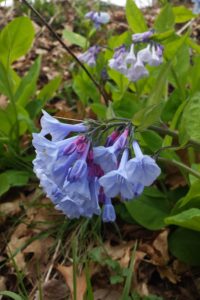
Outside of the primary collection areas, you will find a network of trails winding along Rock Creek and through wooded areas. These “natural” areas are not pristine and untouched. Most of the Arboretum’s 50 acres were farmed or grazed at some point in the land’s history.
The varied topography of Starhill Forest creates a great diversity of habitats to support many native species on site. Habitat types include upland and ravine forests, riparian corridor, floodplain forest, and a small demonstration prairie. The more conservative species and some of the largest old trees are found on the steep hills and floodplain where farming and grazing were not as extensive.

In recent years, a number of invasive species, such as Amur honeysuckle (Lonicera maackii) and garlic mustard (Alliaria petiolata) have become problematic. We work hard, with help from many volunteers, to remove invasive species and maintain a relatively open understory. Through regular restoration and maintenance efforts, many woodland wildflowers, a variety of prairie plants, and 55 native tree, shrub, and vine species can persist, reproduce, and provide habitat. With climate change and the introduction of a host of pests and disease, restoration efforts are an ever-evolving process.
The two miles of trails that criss-cross the natural areas are the perfect place for a peaceful hike or a guided nature walk. Test your plant identification skills and see how many of our native trees, shrubs, and vines you can spot with this checklist of woody plants found at the Arboretum, and document the plants you see with the iNaturalist app!

